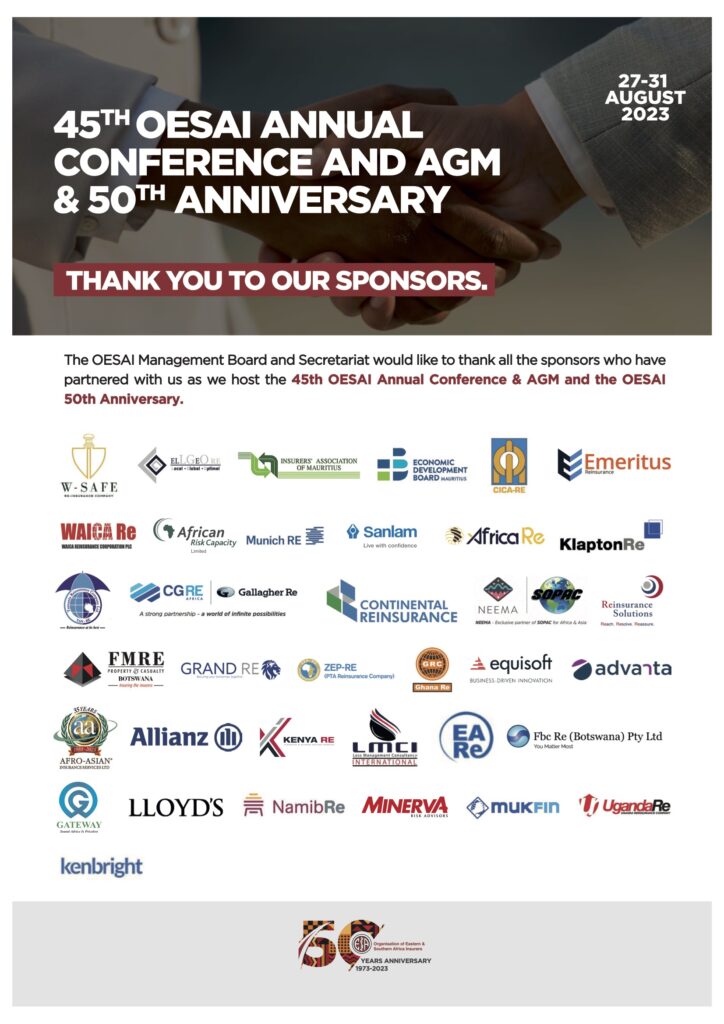By Fikru Tsegaye Wordofa1 (CTP, ARA, ACS, FLMI, Cert, CII(UK)
INTRODUCTION
Ethiopia is one of the world’s oldest countries, its territorial extent having varied over the millennia of its existence. Ethiopia’s capital Addis Ababa (“New Flower”), is therefore often referred to as “the capital of Africa” for its historical, diplomatic, and political significance for the continent. Ethiopia as well is known by Ethiopian Airlines also termed as “Africa’s Link to the World”. Ethiopia has offered a greater richness in archaeological findings and historical buildings which makes it a country of rich heritage. Thus, Ethiopia is regarded as the cradle of both mankind and civilization. With about 126 million people (2023), Ethiopia is the second most populous nation in Africa after Nigeria, and the fastest-growing economy in the region. Ethiopia aims to reach lower-middle-income status by 2025.
INSURANCE SECTOR
The essence of insurance is not new in Ethiopia. It’s, rather, deeply rooted in the people’s tradition. The traditional systems of “Iqub and Idir” are perhaps centuries old yet continue to play a vital role in Ethiopia’s finance. Ethiopians are known for cooperation, risk-sharing, and mutual support at times of grief or work. EDIR- traditional (informal) community-based insurance services/mechanisms serving as a Funeral society. Nowadays, ‘Edirs’ –evolved to serve the living as well as the dead. There are also financing and jointly working schemes like Equb and Debo, Wonfel and Meredaja Mahber others…though the naming differs in different parts of the country. Quantifying the magnitude of funds held in these systems, particularly “Edir/Iqub”, is difficult- have the widest coverage than banks and insurers. EDIR is a traditional form of insurance transaction very much related to life insurance. However, the modern insurance transaction could be said to have started in Ethiopia in 1905, by a foreign bank named The Egyptian Bank.
Sources indicate that during the imperial regime, although the Ethiopian economy has been state-controlled through a series of industrial development plans during the Imperial Government of Haile Selassie, the insurance sector was dominated by foreigners (the leadership, ownership, and even service consumption). Foreign ownership was allowed, and many players were operating their number went up to 13 insurers at the end of the regime. The insurance supervision was under the then Ministry of Commerce and Industry which later incorporated under the State Bank or National Bank.
During the Dergue Regime, which was known for a “Soviet-style” centrally planned economy under a socialist government from 1976-1991, the assets and liabilities of those companies alive at the end of the imperial regime were nationalized to form a State monopoly. Only the Ethiopian Insurance Corporation was a sole player with limited insurance coverage. The sector was closed to foreigners and domestic private players.
Even after the post-1991 government, to date the sector remained closed to foreign operators. All Ethiopian insurers are confined to Ethiopian territory. In this regard, Ethiopia appears unique compared to its East African neighbors (namely Kenya, Tanzania, and Uganda) and other developing countries in Sub Saharan Africa (SSA) region in that it has not yet opened its insurance sector to foreign participation. The country follows a “Closed Door” policy, and the effort isolated the country from the rest of the world and the impact of “globalization” is not felt to date. Ethiopia’s financial sector remains closed and is much less developed than its neighbors. After the Domestic- Liberalization of the market, the privately owned domestic insurance companies penetrated the financial market and sliced the market share of Ethiopian Insurance Corporation from 100 % to as low as 30 % (June 30, 2023). Although there are efforts to establish independent supervision, the supervisory organ is still operating under the National Bank of Ethiopia.
As of June 2023, the total number of insurance companies has reached 18 of which one is state-owned. The total number of branches, brokers, and agents has reached 717, 65, and 2,126, respectively. There also exists one locally incorporated national reinsurer and two regional reinsurers that have local contact offices. The industry’s written premium for the period ended June 2023 reached Birr 23 billion ($ 416 million). The total assets and total capital of insurers have reached Birr 47 billion and Birr 14 billion, respectively which showed an increase of 4.6% and 20.9% respectively. Currently, Ethiopia’s Insurance penetration stands at less than 0.4% and Insurance density at 3.3 USD.

The Way Forward
Although Ethiopia’s insurance industry tends to grow in step with the broader economy, a lot is left to be desired in terms of penetration, density, and branch-to-population ratio as well as the sector’s contribution to the GDP. There is still a lot of headroom for growth in Ethiopia as evidenced by the low insurance uptake.
The market by any means should be liberalized for foreign investors and prohibitions should be waived to those with a strong capital base, expertise, technology, and innovation. Opportunities should be given to those who are interested to invest in the least performing classes such as life, liability insurance, micro, and agricultural insurance, to mention a few. With 126 million plus, predominantly young population, the level of development of life insurance is insignificant. A paradigm shift and structural changes should be introduced to change the industry’s landscape in the areas of risk exposures, human capital development, creating a real and service-based competitive environment, and the use of technology and regulation.
Introducing independent governance and a standalone supervisory authority structure that could properly foresee and create enabling regulatory framework should be considered instead of annexing the insurance supervision under the central bank.
